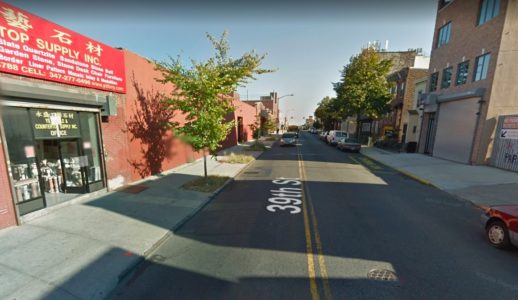How do you bring crime down 10 percent over the course of a year?
According to the commanding officer of the 68th Precinct — where crime dropped 10.18 percent between 2017 and 2018, as of Dec. 30 of last year — the precinct’s success can be attributed to the launch of the NYPD’s Neighborhood Coordination Officers program, combined with strong community support and good, old-fashioned hard work.
The precinct was ninth in the city for 2018 in terms of crime reduction.
Citywide, crime was down 1.38 percent, as of Dec. 30, between 2017 and 2018.
Capt. Robert Conwell, the precinct’s commanding officer, told this paper in a one-on-one interview at the station house, 333 65th St., that the introduction of NCOs into the precinct this past summer had created new opportunities for the precinct to draw on the knowledge of local residents, community leaders and elected officials that had paid dividends in terms of crime reduction.
“That was the main thing that changed in 2018,” Conwell noted.
The 68th Precinct was one of the last to get the NCO program, which has now been rolled out citywide. The program is a 21st century iteration of community policing, in which dedicated sector officers get to know residents and businesspeople, make their own hours to accommodate specific needs and cope with issues, developing plans to deal with those that arise, and organize quarterly meetings of those who live and work within the sector.
While the NCOs “don’t personally address every issue,” they “ coordinate the response,” added Conwell, who took over as top cop at the precinct last spring.
For instance, Conwell cited the successful arrest of an individual who was stealing Ford Econoline vans. The NCO officers working in the precinct’s Sector B did the investigation, and were “eventually able to get video of the suspect committing the act. Then, once we had that, we had plainclothes officers look out for this guy. With the help of the 122nd Precinct, we caught him live in the act, and were able to arrest him. He’s still in jail.”
In another case, it was the NCOs, said Conwell, whose work led to the arrest last year of the suspect in a pair of incidents in which a man exposed himself to young girls in Bay Ridge.
Explained Conwell, “The NCOs and the youth officer went out canvassing for the vehicle [that the suspect had been using],” he told this paper. “Eventually, they found a person driving around who looked like the suspect, who was slowing down when he saw a young girl. They pulled him over on a car stop and were able to identify him. They gave the info to detectives who were able to do lineups with the victims leading to the suspect’s arrest.
“It was really the work of the NCOs that got us IDs of the suspects,” Conwell stressed.
The division into sectors allows the precinct to respond with almost surgical precision to the problems arising in particular areas. “Certain things spill over, such as crime trends,” said Conwell, “but, for the most part, what we find is that problems are sector-specific.”
A key to the success of the initiative is the interaction with neighborhood stakeholders who share their deep knowledge of the community with the officers. They, said Conwell, “let us know where the problems are and where they want us to work. That’s where we put our guys.”
The precinct is “fortunate,” he added, in that “the community is very supportive and very invested in us, and what really puts policy into practice is the hard work of the police officers, who are out there, doing what we ask them to do.
“I think the NCO strategy is fitting in very well here,” Conwell remarked. “It can only get better as we expand our network.”
In addition, Conwell said, the precinct doesn’t wait a week or even a day to analyze incidents within the precinct’s borders. “We analyze crime as it comes in,” he said. “Weekly or daily, it could be too late. We see right away if we have a problem or a trend. Precision policing combined with crime analysis [enables us] to zero in on the top offenders and stop crime.”
In the 68th Precinct — which encompasses Bay Ridge, Dyker Heights and Fort Hamilton — five of the seven crime categories tracked through the NYPD’s CompStat program, known as index crimes, showed decreases from 2017 to 2018.
Murder was down 33.3 percent, with two in 2018, three, the prior year. Also way down were robberies, with 59 in 2018 compared to 81 the year before, for a reduction of 27.2 percent. Burglaries were close behind: There were 95 in 2018, and 124 in 2017, for a year over year decrease of 23.4 percent. Grand larceny also was down, with 384 last year compared to 427 the year before. Finally, incidents of grand larceny auto (GLA) were reduced 7.5 percent, with 86 in 2018 compared with 93 the previous year.
There were two categories that showed increases: Felonious assaults were up 10.5 percent, with 126 in 2018 compared to 114 in 2017. In addition, there were reports of 16 rapes in 2018, compared to 13 in 2017, for an increase of 23.1 percent. Citywide, reports of rape were up 22 percent, and felonious assaults were flat.

 Cops arrest man for attacks on women and child
Cops arrest man for attacks on women and child  ME rules homicide in poisoning deaths of woman and grandson
ME rules homicide in poisoning deaths of woman and grandson